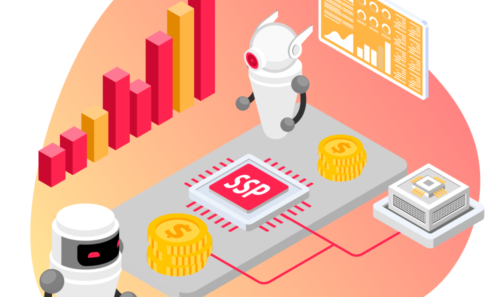eCPM, rCPM & Fillrate – Fundamentals of Website Performance Analysis and Most Influential Factors
Some publishers only look at total daily/monthly revenue to track their progress. Others monitor metrics like eCPM or rCPM (RPM). At Yieldbird, we observe ad-request eCPM on a daily basis. For us, this is the most objective performance indicator.
Below, I will explain why it is our top choice, and what factors can have a big impact on its changes. Let’s start with the three most important elements of all publishers’ businesses and their relevance to programmatic monetization:
1. Users:
This is an initial and crucial element. Without users, we would not have anyone to display the ads to, but users are just a means to an end because they can greatly vary in terms of their ad value. Some of them make just one or two page views, while others can generate up to 20. In the end, they can choose to use cookies or not. Considering that retargeting is highly profitable from our perspective, cookies can make a huge difference.- Summarizing this with a simple example from the revenue perspective, it is usually more valuable for a publisher to have 50 users with desirable cookies making 10 page views each on desktop than it is to have a 100 users on incognito mode making 20 page views on mobile.
2. Page views:
This element is more relevant to the measurement of our potential effectiveness, but not entirely. Many publishers think that the more page views they have, the more they should earn. They expect to have the same or growing RPM (revenue/1000 page views), but page-view values can differ from one another. A page view can come from a site with no ads, where there are no ad requests to sell. It might be from a mobile site, where usually there are up to three ad requests. It can have its source on a desktop site with even five ad requests as well.- That is why it’s important to look closely at the share of specific page views. This will help you understand the overall amount and quality of your ad requests, which are sold to advertisers.
3. Ad request:
Considering all the above, this is a crucial element – one request is a chance to sell one ad. You won’t see big differences in ad – request values – not like in case of users or page views; nevertheless, do not expect ad requests to always have the same value.Having the key elements covered lets us explain the metrics used by publishers to measure the results and their relevance.
What are eCPM, rCPM & Fillrate?
Most publishers look at two indicators – eCPM and fillrate – to assess if the inventory is monetized well. In our opinion, these shouldn’t be your first choice for monitoring indicators. The most useful and objective is rCPM, which is revenue/1000 requests. Observing it on a timeline might tell whether your strategy brings you desired results.
Here’s why:
a) eCPM:
This metric shows us how much money we make for 1000 sold impressions. It is a useful factor, as it shows how expensive or cheap we sell our impressions. Nonetheless, it doesn’t tell us much about effectiveness. We can easily set floor prices at 10 USD and lift the eCPM to this level in October. Unfortunately, we would sell 20 times fewer impressions and earn probably ¼ of the potential money.b) Fillrate:
This is a percentage of all of publisher’s ad requests sold. Fillrate is considered by many publishers as an indicator of their success, due to the false belief that selling all your inventory will bring you the highest revenue. Unfortunately, selling as many impressions as possible doesn’t generate the whole potential revenue. In the end, this may simply mean you are selling at the lowest prices and losing money.c) rCPM:
This is the most important indicator. It can help us find balance between how much money we want for our product and how much of it we are willing to waste. We don’t want to accustom buyers to low prices, which would hurt us in the long run.- Using a simple farmers market metaphor may help you understand this mechanism. If we have 10 apples to sell, we don’t want to sell two of them for 5 USD or 10 of them for 1 USD. We aim to sell seven for 2 USD.
Do you like what you’re reading? Subscribe our newsletter for more content like this!
Now we have the foundations of our work established.
Since we’re talking about apples, I’d like to describe the characteristic of ad requests as a product, and factors that make a big difference in terms of our potential to monetize them. Think of the marketplace as more of an Apple than an iPhone. With the iPhone, you have something unique. The competition is not so vast, and demand in all markets is more or less the same. In this situation, you can set a price for one handset/user and keep it more or less at the same level throughout several months. With ad requests, we have a different situation.
Ad requests have big competition, which is constantly growing because of new publishers entering the market. Their ad requests are similar to ours. They are seasonal products, and prices strongly depend on the amount of supply on the market. It is also fragile and responsive to unexpected events or even catastrophes.
There are many external factors indicating programmatic performance and effectiveness. We describe them below:
1. Scale of our product and amount of competition on the market:
Let’s assume there is a publisher that generates 500 million ad requests in one month. In the next month, he suddenly generates 1.5 billion ad requests. Demand for buying these impressions doesn’t change much month to month. The result for this publisher is that he has to lower his prices, otherwise his fillrate will drop significantly. We don’t want this metric to be too low.- The same thing happens in the apple market. There are seasons when the supply of apples is so high that their prices have to drop, and of course, there are seasons when the supply is so limited, their prices are at their highest.
- The rules of the programmatic market are very similar. Selling expensive supply will make your buyers leave you and purchase from your competition.
2. Season for demand:
As the quantity and quality of product are factors we can influence in some part, we cannot control demand in any way. We know that there are seasons when buyers are fighting for the best impressions and are willing to pay more – usually at the end of every quarter, or Q4 (due to the holiday season). Unfortunately, there are also periods of the year when a number of campaigns and budgets are limited. This is an important fact to consider when assessing how many impressions you can sell, and for what price.3. Unexpected events:
In general, the programmatic market is stable and repeatable every year, but there are several exceptions that can be very unfavorable for publishers. The best example is a catastrophe, like an earthquake or hurricane. Usually, right after such events, advertisers stop their campaigns for a couple of days, depending on the scale of damage. On the other hand, certain types of websites can perform much better than the rest of the market. Most often, these are sites from news and weather categories.4. Direct campaigns:
Most publishers, apart from revenue coming from programmatic, have direct campaigns signed with advertisers. It means that their most expensive impressions are sold outside of the programmatic market.5. Geos:
rCPM, eCPM, or demand can be different with each country your users come from; however, it is important to focus on several of the biggest countries. They can and will make the biggest difference in terms of the overall budget realization in case of any shortages.6. Market changes:
In the last couple years, the programmatic business went through many changes on local and global levels, which had a huge impact on monetization potential. Just some of the changes are the General Data Protection Regulation rollout in the EU, the Better Ads Initiative, and the change in cookie lifetime on iOS 11 and newer Apple devices. Every one of those changes limited monetization possibilities of the publisher upwards of 50%. It’s good to be up to date with major market changes, as publishers will likely be affected by most of them.There is a lot to digest and take into consideration while choosing the optimal perspective for programmatic monetization. Even more so to look for key factors standing behind unexpected drops in performance. My advice is to stay aware of seasonality, track any upcoming big changes, and monitor rCPM or RPM on a daily basis. By doing this. you’ll stay in control of your inventory performance.






